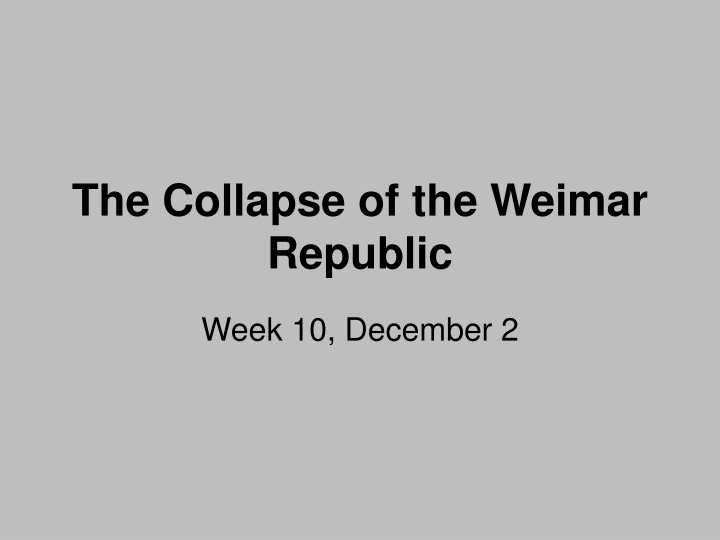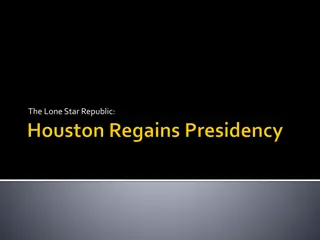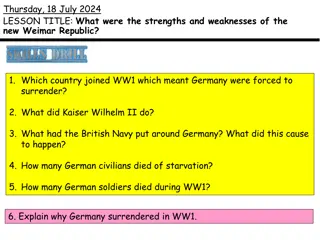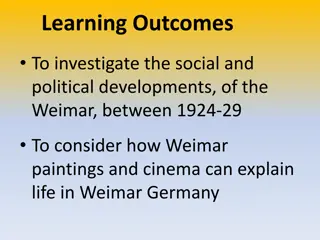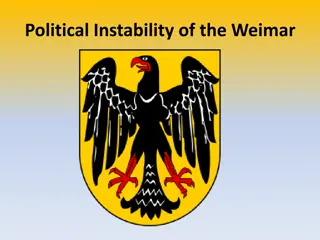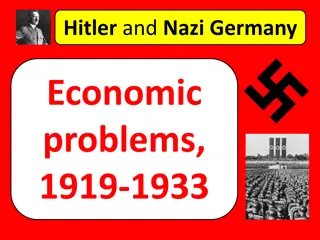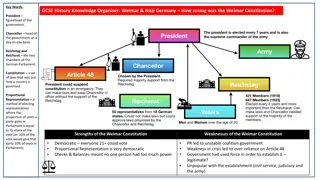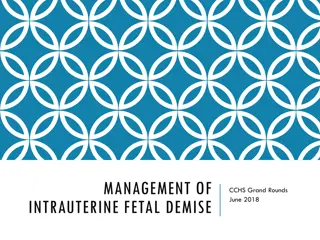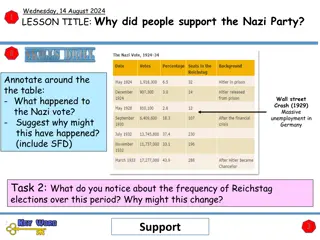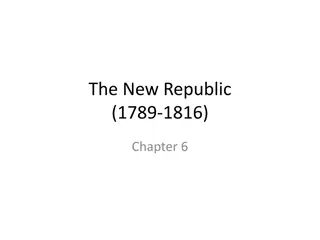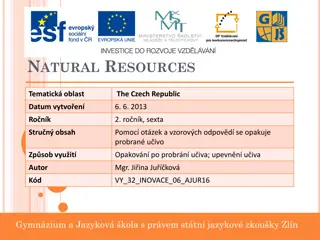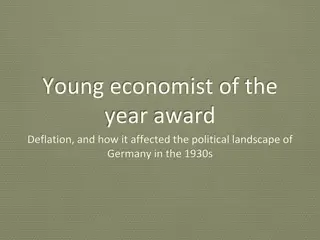The Weimar Republic's Demise & Rise of NSDAP
The collapse of the Weimar Republic marked by rising unemployment, Reichstag elections, conservative politicians' role, and Brüning's controversial Chancellorship, leading to the rise of the NSDAP under Hitler's leadership in early interwar Germany.
Download Presentation

Please find below an Image/Link to download the presentation.
The content on the website is provided AS IS for your information and personal use only. It may not be sold, licensed, or shared on other websites without obtaining consent from the author.If you encounter any issues during the download, it is possible that the publisher has removed the file from their server.
You are allowed to download the files provided on this website for personal or commercial use, subject to the condition that they are used lawfully. All files are the property of their respective owners.
The content on the website is provided AS IS for your information and personal use only. It may not be sold, licensed, or shared on other websites without obtaining consent from the author.
E N D
Presentation Transcript
The Collapse of the Weimar Republic Week 10, December 2
Reichstag and Landtag elections Unemployment and radical votes Bold line: unemployed Hollow line: votes for the NSDAP and KPD (Bundesarchiv)
Conservative politicians instrumental in the collapse Paul von Hindenburg, president, 1925-1934 Heinrich Br ning, Chancellor 1930-32
Brning as chancellor for many historians, his cabinet marks the end of the Weimar democracy Backed by Hindenburg, used article 48 to approve his budget and minority govt Major cuts in welfare Foreign policy priority, confrontational position with the Western powers, break with Stresemann s careful policy Instrumentalized the rising unemployment against the Western powers Lead to further escalation of the domestic situation
Rise of the NSDAP Early interwar Germany a fertile breeding ground for radical right-wing organizations. 1919: Anton Drexler founds the Deutsche Arbeiterpartei (German Workers Party, DAP). Adolf Hitler joined the DAP in Sept. 1919, quickly rising through the ranks to become the party s chief theorist and propaganda officer. Feb. 1920: Hitler heads a committee which draws up the Party s 25 Point Programme which remains the basis of Nazi ideology until 1945. April 1920: The DAP renamed the Nationalsozialistische Deutsche Arbeiterpartei (National Socialist German Workers Party, NSDAP or Nazi for short). July 1921: Hitler ousts Drexler & is appointed Party Chairman.
NSDAP, cont. 1923 beer-hall coup; 23-24 Hitler in Landsberg prison 1925: Nazi party re-founded with a new commitment to achieving power through legal means. 1926: The Bamberg Conference Hitler re-established his supremacy in the Party, overcoming the challenge to his leadership from Gregor Strasser, but was forced to concede that the 25-Point Programme (with its socialist elements) remained inviolable. Establishment of new efficient Party structure and youth and women s organisations led to a growing membership: 27,000 in 1925 increased to 108,000 in 1928. But still had little popular support they won only 2.6% of the vote in the Reichstag elections of 1928.
Programmatic points of the NSDAP Key concepts: Race and antisemitism F hrerprinzip (one leader) Anti-Communism Nationalism Volksgemeinschaft (folk community) The 25 Points: Creation of a Greater Germany encompassing all ethnic Germans Revocation of Treaty of Versailles and back to old borders Demand for space (Lebensraum) (vehemently anti-Slavic, anti- Soviet, anti-Polish) Only members of the Volk can be citizens: no Jew can be a citizens & all non-citizens to be deported The primary duty of the State is to provide a livelihood for its citizens: introduction of profit sharing & extension of welfare state
Election results in Weimar After Peukert
Communists in the Weimar Republic Communist youth organization,1925
Ernst Thlmann, 1886- 1944 (KPD leader) Liebknecht house, B lowplatz, KPD headquarters
Politicians in the collapse II Kurt von Schleicher, chancellor 11/1932-1/33 Franz von Papen, chancellor 6-11/1932
Preuenschlag (Prussian coup), July 1932 Papen ousted the minority govt of Otto Braun (SPD) in Prussia, the largest German state, continually governed by the social democrats, and named himself interim head of the state
Federal Elections July 1932 largest legal gains for the Nazi party (37,8%), negative majority together with the KPD (319 seats from 608 in the Reichstag)
Tchakhotins Three arrows The Iron Front anti-Nazi and pro-democratic movement of SPD, labor unions, and the Reichsbanner (veterans association affiliated with the SPD)
Federal election November 1932 Last democratic elections of Weimar Germany
Reasons for failure of the Weimar democracy: economic crisis and unemployment distrust in the system, no longer believable rise of fascism split of the Left Weimar ran out of alternatives; only returning to monarchy or some kind of dictatorial leadership Syndicate of elites now backing the Nazis, endowing them with legitimacy
